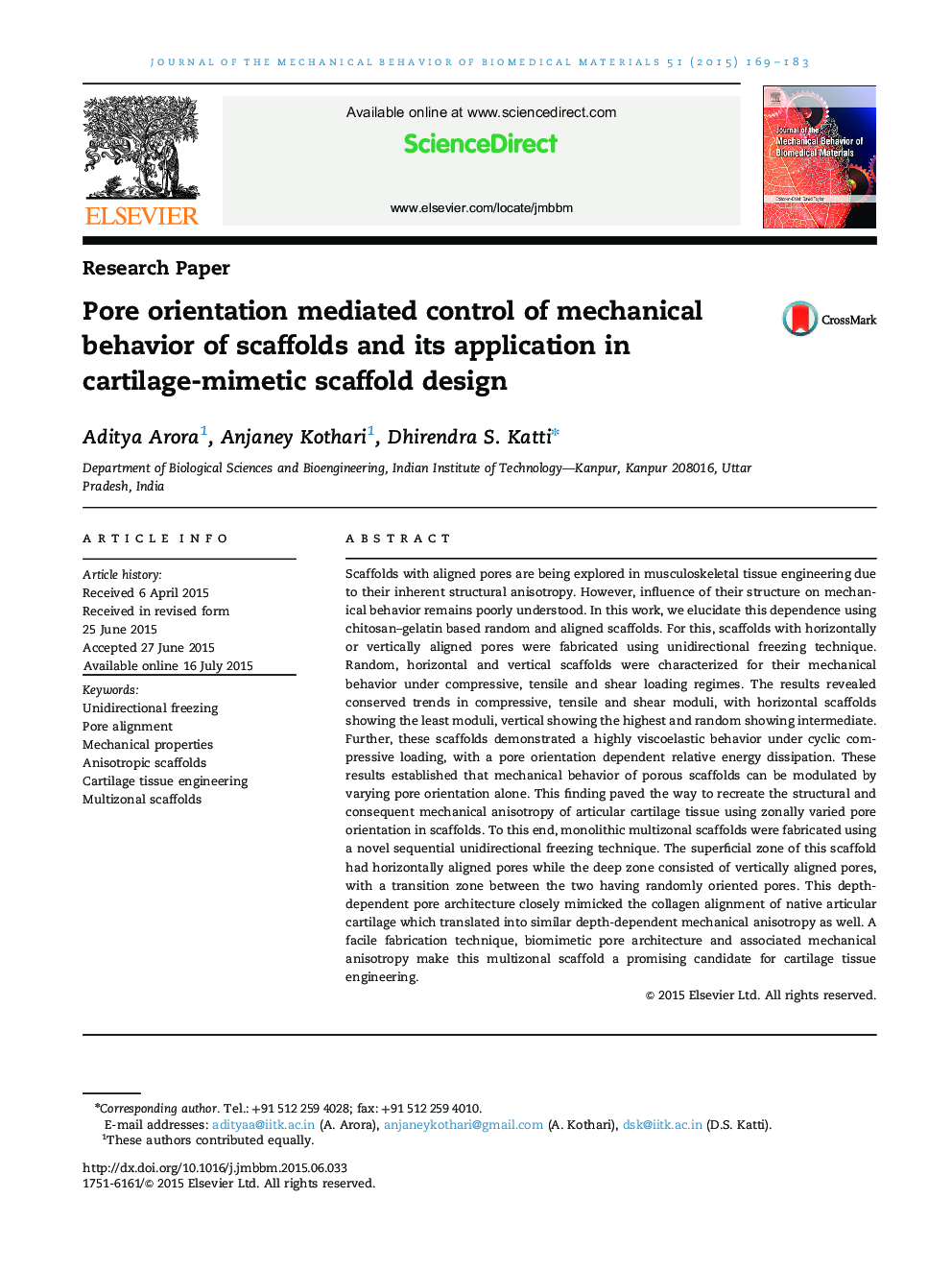| کد مقاله | کد نشریه | سال انتشار | مقاله انگلیسی | نسخه تمام متن |
|---|---|---|---|---|
| 810555 | 1469094 | 2015 | 15 صفحه PDF | دانلود رایگان |
• Chitosan–gelatin scaffolds fabricated with random, horizontal and vertical pores.
• Aligned scaffolds demonstrate anisotropy under compressive, tensile and shear loading.
• Mechanical moduli increase from horizontal to random to vertical.
• Biomimetic multizonal pore organization led to cartilage like mechanical anisotropy.
• Anisotropic multizonal scaffolds hold potential for cartilage tissue engineering.
Scaffolds with aligned pores are being explored in musculoskeletal tissue engineering due to their inherent structural anisotropy. However, influence of their structure on mechanical behavior remains poorly understood. In this work, we elucidate this dependence using chitosan–gelatin based random and aligned scaffolds. For this, scaffolds with horizontally or vertically aligned pores were fabricated using unidirectional freezing technique. Random, horizontal and vertical scaffolds were characterized for their mechanical behavior under compressive, tensile and shear loading regimes. The results revealed conserved trends in compressive, tensile and shear moduli, with horizontal scaffolds showing the least moduli, vertical showing the highest and random showing intermediate. Further, these scaffolds demonstrated a highly viscoelastic behavior under cyclic compressive loading, with a pore orientation dependent relative energy dissipation. These results established that mechanical behavior of porous scaffolds can be modulated by varying pore orientation alone. This finding paved the way to recreate the structural and consequent mechanical anisotropy of articular cartilage tissue using zonally varied pore orientation in scaffolds. To this end, monolithic multizonal scaffolds were fabricated using a novel sequential unidirectional freezing technique. The superficial zone of this scaffold had horizontally aligned pores while the deep zone consisted of vertically aligned pores, with a transition zone between the two having randomly oriented pores. This depth-dependent pore architecture closely mimicked the collagen alignment of native articular cartilage which translated into similar depth-dependent mechanical anisotropy as well. A facile fabrication technique, biomimetic pore architecture and associated mechanical anisotropy make this multizonal scaffold a promising candidate for cartilage tissue engineering.
Figure optionsDownload high-quality image (517 K)Download as PowerPoint slide
Journal: Journal of the Mechanical Behavior of Biomedical Materials - Volume 51, November 2015, Pages 169–183
